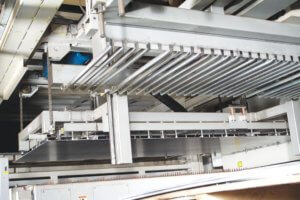Getting on Board with a Modern Fabrication Shop
February 22, 2019
 From the customer’s point of view, the purpose of performing due diligence on a potential supplier is to conduct an exploratory assessment of price competitiveness and if they can live up to minimum quality and on-time delivery requirements. That may be adequate for short-term projects, but for long lasting supply partnerships to develop, a more solid communication bridge should be established.
From the customer’s point of view, the purpose of performing due diligence on a potential supplier is to conduct an exploratory assessment of price competitiveness and if they can live up to minimum quality and on-time delivery requirements. That may be adequate for short-term projects, but for long lasting supply partnerships to develop, a more solid communication bridge should be established.
Entering a long-term relationship is an expensive proposition for both a customer and potential supplier and both parties seek to ensure there will be a return on their investment.
The purpose of this article is to outline our approach to successfully onboarding a fabrication supplier.
Building an Alliance with a Modern Fabrication Shop
Modern fabrication shops have become much more sophisticated than you may realize. Industry leading fabricators today want to be more than just a supplier. Ultimately, they want to be an extension of your business. Isn’t that really what you’re looking for as well? To reach that level of trust takes a lot more groundwork up front, but the effort is well worth it. The following is a basic outline of how the process might unfold.
Stage One: Determine Basic Standards
After completing preliminary research, the next step of your verification process should be to visit the fabricator in person for an introductory meeting. Is this company growing or a couple of individuals working out of a small job shop? A quick look around the shop can save you a lot of wasted time. You can also gauge a potential supplier’s commitment to quality, on-time delivery, and other KPI’s in this preliminary visit.
Stage Two: Getting to Know You
For their part, most modern fabrication companies will want to know a prospective client’s culture as well as they do. This can only be accomplished by learning each other’s language, understanding the context and then building the infrastructure to execute orders effectively. Be prepared to discuss: a general outline of your expectations, key performance indicators, the performance level of your current suppliers, and the state of your business and how you see it growing. This knowledge will help the fabricator match your requirements.
Step Three: Systems Audits
The next move is to conduct audits on operations and quality management systems, as well as a check on capacity available. Frankly, any supplier deemed worthy of an OEM’s business should be put through the wringer. You want to know the fabrication company’s potential capacity within your supply chain. The results of the audits and how they respond should tell you if the shop can handle your output today and, in the future, as you grow. These steps also indicate to the shop that you are looking for a long-term relationship. Top companies in the field should welcome your most intense scrutiny and cooperate fully to demonstrate their ability to meet your requirements.
IT Integration
From the both the supplier and customers perspective, it is vital that computer systems be up-to-date. Fully integrated metal working shops generally have dedicated significant effort and expense to integrate state-of-the-art IT systems into their operations. Jobs are tracked from quotation to delivery by programs specially designed to gain maximum productivity out of the operation’s resources. If a prospective client is not up to speed, trying to work outside the system to accommodate their business could cause an overall decline in efficiency. If you are still using paper purchase orders instead of an EDI platform, you might not be deemed compatible. Syncing up systems is key to moving ahead with the collaboration.
Fit is It
Taking the time and effort to build a bridge that is based on solid communication and systems compatibility will allow the fabrication company to do its best for you and, in turn, give you assurances and measurements that the job is getting done correctly and on time. How do we know this? It’s based on our personal experience onboarding new customers. We have discovered over the years that when the fit is right, both parties benefits.
Once a solid working relation is started, what’s the best way to grow the volume together? Our next article will cover that topic. Stay tuned.



